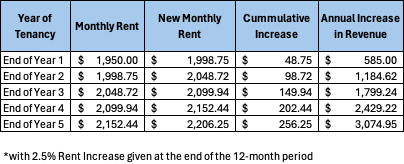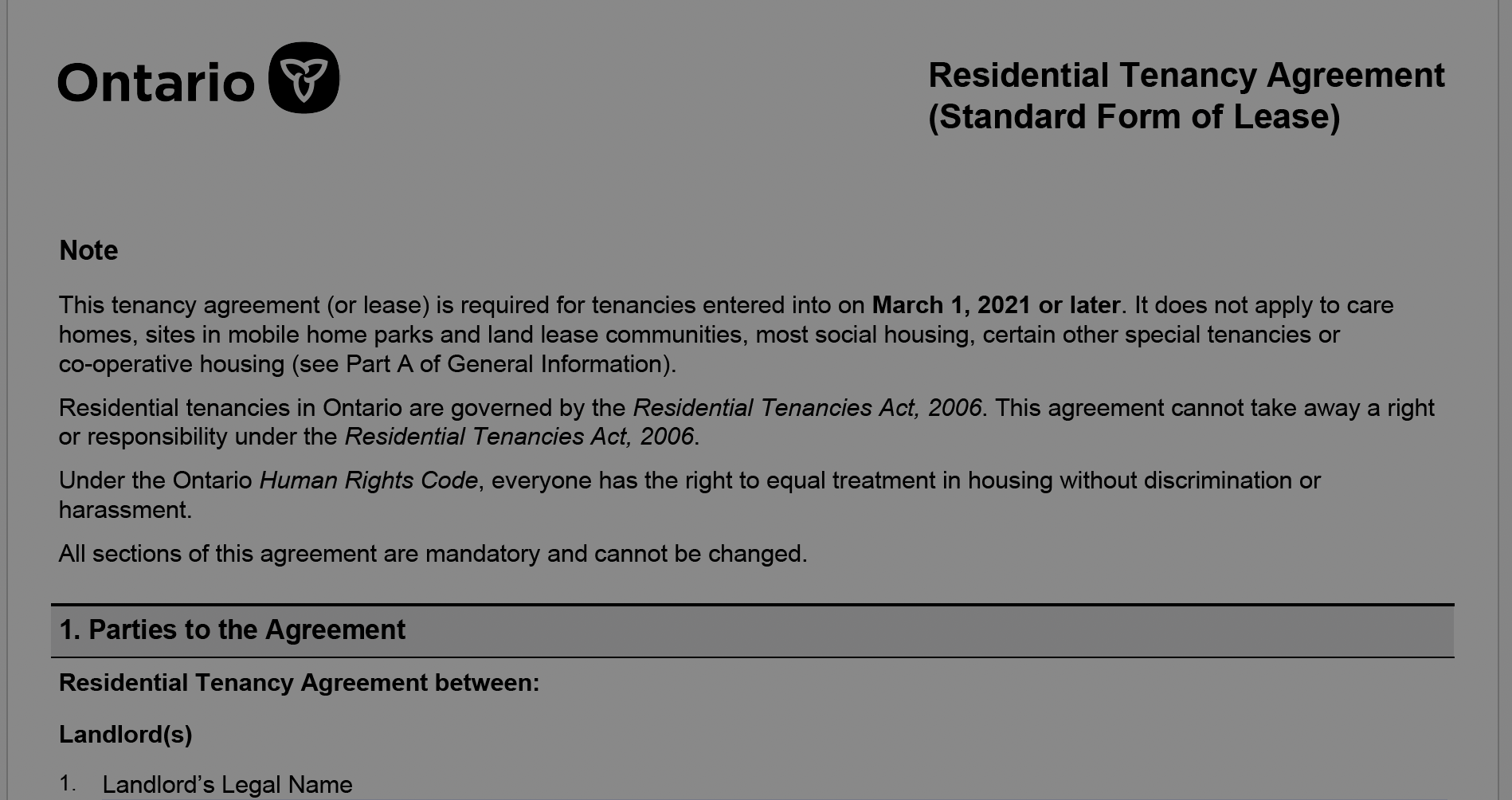Non-payment of rent is likely the single biggest fear of every Landlord. With no rent coming in, Landlords quickly feel the financial strain of carrying the costs of the property on their own.
As if the financial strain isn’t enough, Landlords must also contend with significant delays in the legal process to resolve the non-payment issue. Since the onset of the pandemic, the backlog of cases at the Landlord and Tenant Board has ballooned to 53,000 cases, according to a March, 2024 report. Non-payment of rent issues are now taking upwards of 8-12 months to resolve.
It seems like a dire situation, but that doesn’t mean that you are powerless. Resolving a non-payment of rent issue is all about being proactive and taking action quickly when a problem arises.
How to determine the correct course of action
In our experience, rent payment issues generally fit within five levels of severity. Each level has an appropriate course of action:
Level 1:
The Tenant proactively contacts you to say that their rent will be late and gives you a definite date on which it will be paid. They then pay on or before that date as promised.
Usually nothing to worry about, but might indicate that their finances are fragile and are living paycheque to paycheque. Best to cut them some slack if they’ve been a good Tenant, which can help to build goodwill. However, if it starts to happen more often, you’ll need to take a stricter approach to the keeping them on the payment schedule.
What to do:
Communicate with the Tenant and let them know that you can give them some extra time this month, but going forward they need to be on-time, as per their lease agreement. Send a friendly payment reminder a couple of days before their next rent payment is due.
Level 2:
The Tenant’s payment behaviour starts to become erratic or unpredictable. They start to develop a habit of paying late.
At first, this will seem like a minor issue. You trust the Tenant and know that they have good intentions and will pay as soon as they’re able. Eventually though, this will become the norm and you’ll start to feel that the Tenant is taking advantage of your goodwill. This payment pattern can easily slip into a more serious issue.
What to do:
Maintain an open line of communication with the Tenant and follow up on payment frequently. Silence on your part is worse thing that you can do, as it takes the pressure off the Tenant. If they don’t hear from you, they’ll assume that you’re ok with the situation. If the behaviour persists, start the RTA process outlined below, by serving the Form N4. That might be enough to let them know you’re serious and they’ll get their payments back on schedule.
Level 3:
The Tenant starts paying in instalments randomly throughout the month without your consent.
This is a more serious issue that warrants a more aggressive response.
What to do:
Start the RTA process outlined below as soon as their full rent payment is not received. In many cases, the N4 will be voided by the end of the month assuming they pay in full. That’s ok. Start the process again if their rent is late the following month. Yes, it’s a lot of paperwork and can seem like the Tenant is gaming the system, but your effort will pay off. If the payment behaviour persists and you have the history of N4s, you can seek eviction for constant late payment of rent. That route is not always successful, but will likely help to get the Tenant back on their payment schedule.
Level 4:
The Tenant starts to accumulate arrears.
This is where the slope becomes slippery. Arrears can accumulate quickly (especially with today’s high rental rates!), to the point where the Tenant is not able to catch up. It’s important that you take action as soon as any arrears are carried over to the next month.
What to do:
Start and follow the RTA process outlined below immediately. No matter what the Tenant’s story is, or how good your relationship has been, start the process without hesitation. If the Tenant pays the arrears and voids the N4, great! But if things start to spiral downwards, you’ll be in a great position to get the legal process going with the L1 Application before the arrears accumulate too much.
Level 5:
The Tenant stops paying rent and becomes difficult to get in touch with.
In our experience, this usually does not happen out of the blue, as there are usually indicators as described in points 1 to 4 above. The Tenant may be upset about some other issue (eg. unresolved maintenance issues) or may have experienced a traumatic even (eg. a job loss). In most cases, there is a change in behaviour leading up to this scenario that the Landlord should have been aware of. The non-payment of rent is basically the bottom of a downward spiral that has been happening for some time.
What to do:
Hopefully, you’ve already started the process by serving the N4. If not, don’t wait and hope that the situation improves. It likely won’t. If the Tenant is not communicating, then submit the L1 Application to start the legal process.
How to take control of the situation
Take action immediately
The biggest mistake we see Landlords make is letting the unacceptable payment behaviour continue too long before taking action. This might be because they have a good relationship with the Tenant and want to help them out, or they just procrastinate because they don’t know how to handle the issue correctly, or they falsely believe that the situation will improve.
The problem is: with today’s high rental rates, the arrears accumulate so quickly. Realistically, if a Tenant hits 2 month’s of arrears it’s highly unlikely that they’ll be able to catch up.
If you haven’t started the legal process by that point, then you’re heading for a world of hurt, as it could take 4-6 months to just get a hearing with the LTB, then another 2-3 months until the actual eviction date. That could potentially mean almost a year without rent. It happens just that easily.
The best course of action is to start the legal process immediately by following the RTA process outlined below. Even if the Tenant does pay their rent in full and restarts the process, at least you’ve demonstrated that you are serious and will take action.
The RTA Process
There are specific steps you should follow, as outlined by the Ontario Residential Tenancies Act (RTA). Apart from the backlog at the LTB, the system does work if everything is done correctly.
1. Serve a Notice of Non-Payment of Rent
– Form N4 (click here to access the N4 and Instructions published by Tribunals Ontario)
– This form can be served to the Tenant the day after rent is due.
– It provides the Tenant with 14 days to either pay the overdue rent or move out (19 days if sending the notice by mail).
– Clearly and correctly state the amount of rent owed and the period it covers. The amount owed must be rent only, not other arrears, such as Utilities.
– Send the notice by an allowable means of delivery. Email delivery is permitted only if the Tenant has consented in writing, which should be specified in the Ontario Standard Lease Agreement. You can read our overview and learn the most important clauses of the Lease Agreement Here.
2. Wait for the Notice Period to Expire
– If the Tenant pays the rent within the notice period, the notice becomes void.
– If the Tenant does not pay the rent or move out within the notice period, the Landlord can proceed to the next step.
3. File an Application to Evict a Tenant for Non-payment of Rent and to Collect Rent the Tenant Owes
– Form L1 (click here to access the L1 and Instructions published by Tribunals Ontario)
– This form is used to request a hearing with the LTB to seek an eviction order and to collect the rent owed.
– The application can be submitted online or in person, and there is a fee associated with filing ($186.00 at the time of writing).
4. Attend the LTB Hearing
– Both the Landlord and tenant will be notified of the hearing date.
– The Landlord must present evidence of the unpaid rent and any communications with the tenant.
– The Tenant is given the opportunity to explain their situation.
– The Landlord and Tenant may negotiate a repayment plan, which can be a win-win. The Landlord is able to collect the arrears owing and the Tenant avoids eviction. One condition of the agreement is that the Tenant is automatically evicted if they are late with a payment.
5. Receive the Decision
– If the LTB rules in favor of the Landlord, an eviction order will be issued (if a repayment agreement was not feasible).
– The Tenant will have an opportunity to pay the rent owed and void the eviction order, usually within 11 days (referred to as the “standard 11-day void period”).
– If the Tenant does not pay within this period, the eviction order becomes enforceable.
6. Enforce the Eviction Order
– If the Tenant still does not pay the rent owed after the LTB decision, the Landlord can request the Sheriff to enforce the eviction order.
– Only the Sheriff can legally remove the Tenant from the rental unit.
7. Collecting Unpaid Rent
– If the Tenant owes rent even after vacating the property, the Landlord can take further steps to collect the debt, such as hiring a collection agency or seeking garnishment of wages.
– In our experience, this can be very challenging. For one thing, if the Tenant had the money, they likely would have paid their rent to avoid eviction, so collecting it afterwards will be difficult. Secondly, it can be difficult to track them down once they’ve moved out. Thirdly, they can claim bankruptcy to avoid repayment altogether.
A note about getting Legal Advice
We always recommend that a Landlord should hire a reputable Paralegal to represent them throughout this process. Yes, there is a cost to legal representation, but the benefits far outweigh the costs:
- Once you serve the N4 and file the L1 Application, you are essentially entering the legal system and need someone on your team with experience in navigating the system.
- There are many nuances to navigating this process effectively. An experienced Paralegal will know the correct action to take in order to ensure the best outcome.
- Even a minor mistake in the paperwork or how it was served can be cause for dismissal of the case.
- The Landlord is burdened with additional responsibilities throughout the process and a Paralegal will ensure that you are doing everything that you need to do.
- The Tenant will be provided duty council (ie. court-appointed legal representation) by the court at no cost. This will put you at a considerable disadvantage if you are representing yourself.
- The Tenant and/or their legal representative may use certain tactics to delay Hearings and execution of an Order or Eviction. An experienced Paralegal knows all of the tricks and can help you avoid costly delays.
Conclusion
Having a Tenant not pay their rent can be a stressful situation, but that doesn’t mean that you are powerless. In any scenario, you need to take quick and correct action to minimize your risk and losses.
By following the process outlined above, you’ll be able to resolve many issues yourself. You’ll also be in a position to swiftly take legal action if the problem persists or worsens.
Like anything, it’s impossible to control the behaviour and actions of others, but by preparing yourself for action, you protect yourself against negative outcomes.










